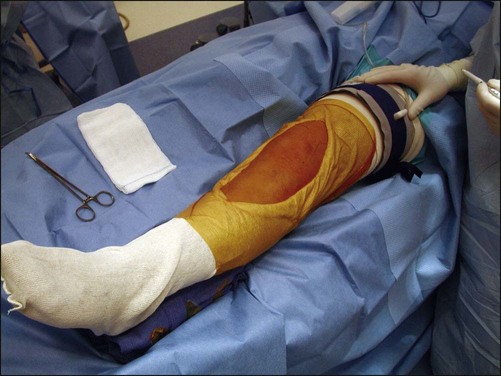• Figure 2 shows a lateral radiograph of a type I fracture. • Figure 3 shows a lateral radiograph of a type II/III with extension into the joint. • Figure 4 shows a lateral radiograph of a type III fracture hinged at the joint line. • Figure 5 shows a lateral radiograph of a type IV fracture. • When injured, this results in varying degrees of soft tissue disruption to the periosteum, extensor retinaculum, and deep fascia adjacent to the tibial tubercle, which often necessitates repair.
Open Reduction and Internal Fixation of Tibial Tubercle Fractures
Examination/Imaging
 Fractures can be described by the Ogden modification of the Watson-Jones classification to emphasize both degree of proximal fracture extension and amount of comminution. Figure 1A–E illustrates types I through V, respectively.
Fractures can be described by the Ogden modification of the Watson-Jones classification to emphasize both degree of proximal fracture extension and amount of comminution. Figure 1A–E illustrates types I through V, respectively.
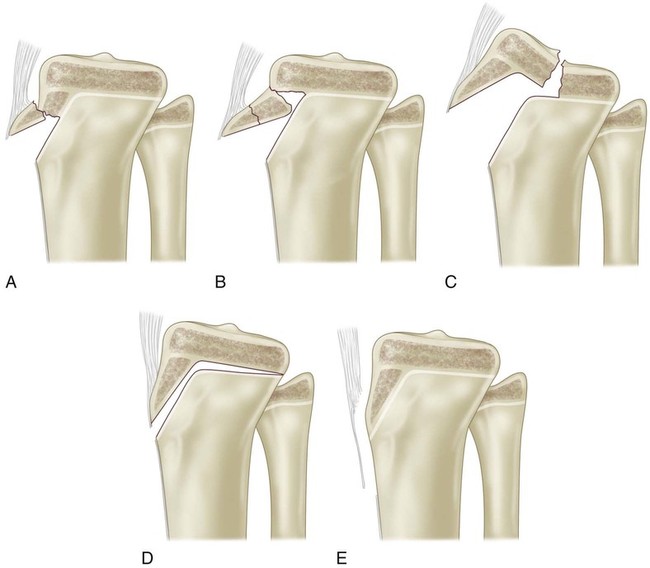
 Lateral radiographs of the knee in slight internal rotation provide an adequate view of the tibial tubercle to assess fracture displacement.
Lateral radiographs of the knee in slight internal rotation provide an adequate view of the tibial tubercle to assess fracture displacement.
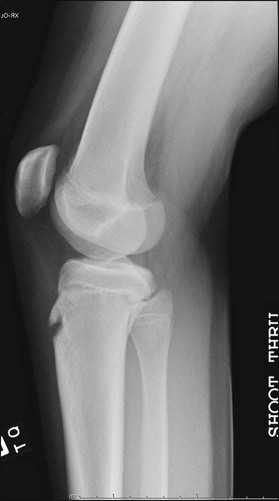
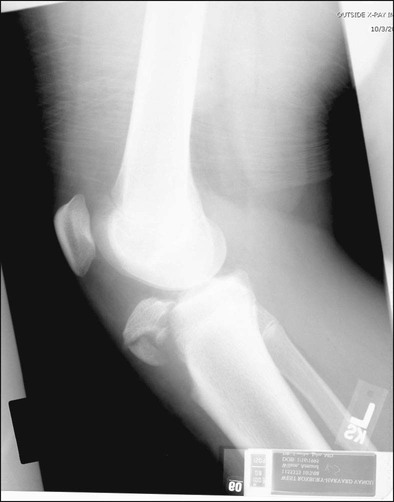
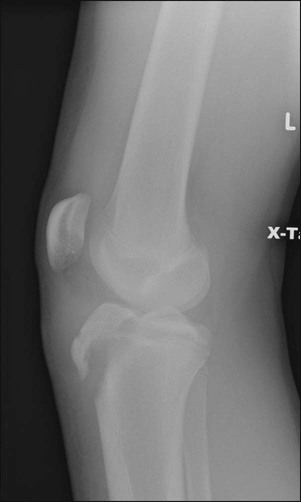

 Magnetic resonance imaging of the knee can show the presence of a nondisplaced fracture line extending into the proximal tibial epiphysis (Fig. 6).
Magnetic resonance imaging of the knee can show the presence of a nondisplaced fracture line extending into the proximal tibial epiphysis (Fig. 6).
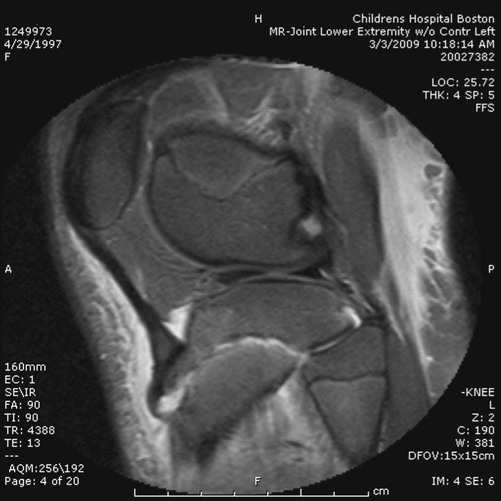
Surgical Anatomy
 The patellar ligament inserts on the tibial tubercle and has attachments into the deep fascia of the proximal tibia.
The patellar ligament inserts on the tibial tubercle and has attachments into the deep fascia of the proximal tibia.
 Along the lateral aspect of the tibial tubercle, there are branches of the anterior tibial recurrent artery that may retract laterally and distally into the musculature of the anterior compartment at the time of injury, resulting in hematoma formation and increasing the risk of developing compartment syndrome (Fig. 7).
Along the lateral aspect of the tibial tubercle, there are branches of the anterior tibial recurrent artery that may retract laterally and distally into the musculature of the anterior compartment at the time of injury, resulting in hematoma formation and increasing the risk of developing compartment syndrome (Fig. 7).
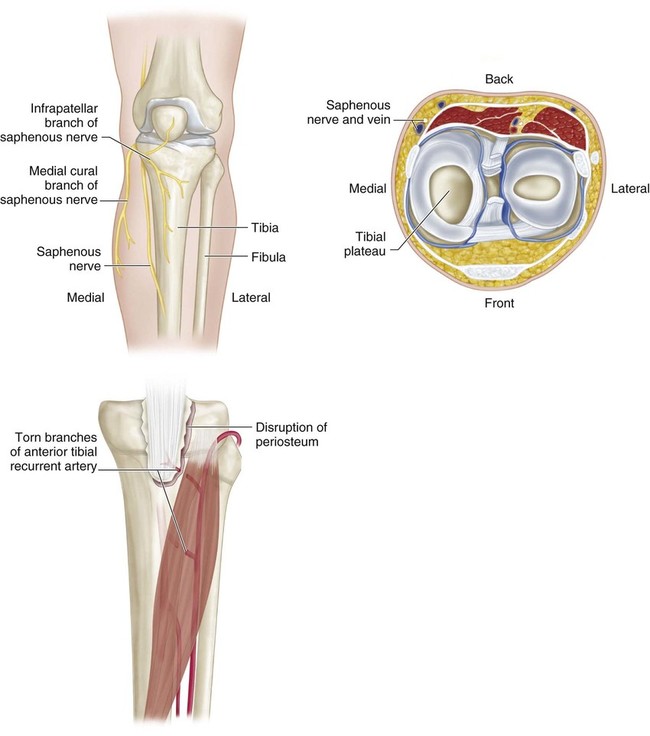
 Medial branches of the infrapatellar branch of the saphenous nerve may be observed, and care should be taken to preserve this nerve to avoid a large area of anesthesia.
Medial branches of the infrapatellar branch of the saphenous nerve may be observed, and care should be taken to preserve this nerve to avoid a large area of anesthesia.
39: Open Reduction and Internal Fixation of Tibial Tubercle Fractures







